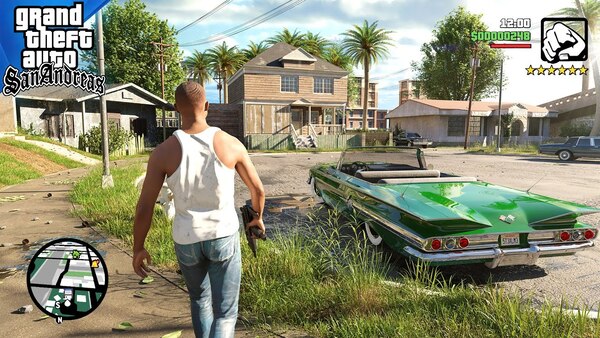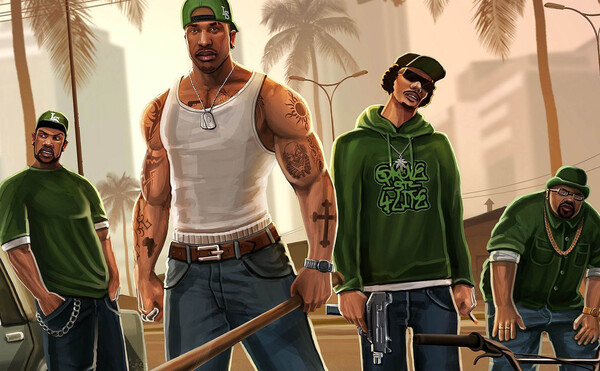Popular Now
GTA: San Andreas is revered for its vast open world, ambitious story, and groundbreaking gameplay. Yet beneath its legendary status lies a systemic issue that has frustrated players since its release—the erratic and often unfair behavior of police AI. In a game that champions player freedom and immersion, the inconsistent and punitive law enforcement system often undercuts the experience.
This article will dive deep into how police mechanics work in San Andreas, where they break down, how they affect gameplay, and what could have been done better. It’s not just about being chased for stealing a car—it’s about how the law in this game operates less like a system and more like a chaotic force of nature, often leaving players feeling punished rather than challenged.

The Basics of Law Enforcement in San Andreas
How the Wanted System Works
The police system in San Andreas uses a six-star wanted level to dictate law enforcement response. At one star, officers simply pursue on foot. By six stars, the military is involved. This creates an escalating sense of danger, but the system’s logic is often inconsistent.
Initial Design Intent
Rockstar intended for this system to encourage risk-reward gameplay—commit crimes and deal with consequences. However, what seems like a fair mechanic on paper quickly turns into a source of player irritation due to how randomly it can escalate and how AI behaves unrealistically.
Police AI: Predictable Until It Isn’t
Unnatural Awareness
Police in San Andreas possess near-omniscient awareness. Commit a minor crime in an alleyway with no witnesses? Officers may still magically appear. This unrealistic detection system breaks immersion and creates paranoia rather than fair tension.
Aggression Over Realism
Cops behave with an absurd level of aggression. Even a light traffic offense or accidental bump can lead to full-scale chases. The lack of response variety means all crimes are treated with deadly force, lacking the nuance expected in a world that otherwise feels alive.
The Flawed Morality of Law Enforcement
Justice Without Balance
The moral structure of San Andreas’ world is complicated—gangs, corruption, betrayal. Yet the cops are uniformly portrayed as either corrupt or ruthlessly efficient. There’s no spectrum of behavior. This black-and-white morality contrasts heavily with the game’s grey-world storytelling.
No Redemption System
CJ can donate money, complete paramedic missions, and help civilians, but the police never take these actions into account. A more dynamic reputation system could have balanced the experience, allowing CJ to earn leniency or benefits from good deeds.

Inconsistent Star Assignment
Punishment Doesn’t Match the Crime
One of the most frustrating elements is how the game assigns wanted stars. Accidentally bump into a pedestrian at low speed? You might get a star. But shoot up a rival gang during a mission? Sometimes nothing happens.
Environmental Influence
In some neighborhoods or mission sequences, the police seem absent. In others, they teleport into action within seconds. This lack of consistency undermines the core gameplay loop of risk vs. reward.
The Broken Escalation Curve
Jump from Zero to Chaos
At two stars, players are already under aggressive pursuit with vehicles and helicopters. There’s little room for escalation—it just jumps to full chaos. Unlike GTA IV or V, where a one-star level might be humorous or escapable, San Andreas turns up the heat almost instantly.
No Safe Zones
There's almost nowhere to regroup once police attention is drawn. Safehouses aren’t always safe, and pay ‘n’ spray garages can sometimes fail if you’re mid-chase. This increases frustration and removes strategic play from police evasion.

Mission-Specific Police Behavior
Scripted Leniency and Inconsistencies
In some missions, police won’t interfere even when massive crimes are committed. In others, they react aggressively to minor infractions. This creates a dissonance between story and sandbox.
Unfair Interference
There are also missions where you’re penalized for being chased, even when the game put you in that position. Example: escort missions where a star is scripted into the mission but causes failures if you can’t escape fast enough. It’s an unfair design flaw.
Lack of Civilian and Police Interaction Realism
No De-escalation or Dialogue
Police will shoot at CJ even if he surrenders or stops. There’s no way to pay a fine, surrender, or negotiate. This results in an "always run, always fight" mentality that makes every encounter binary—win or die.
No Civilian Support
Civilians don’t interact with the police in meaningful ways either. In a city with so many characters, why don’t witnesses report crimes? Why don’t cops break up street fights or intervene with NPC aggression unless CJ is involved?
Vehicle Mechanics and Police AI Issues
Police Cars Defy Physics
Police vehicles can accelerate instantly, teleport behind you, and ram your car with near-unlimited health. Their ability to track players regardless of terrain, car type, or traffic bends the game’s physics in their favor.
AI Roadblock and Pathing Flaws
Roadblocks can sometimes spawn too late, too early, or in unrealistic locations. Helicopter gunner AI is inconsistent, and ground units often glitch into traffic. These inconsistencies add to the chaos rather than strategy.
Modding and Fan Fixes
What the Community Did
Modders have released countless police AI overhauls, from smarter detection systems to reputation-based arrest mechanics. These mods often receive high praise, highlighting the demand for a more logical law enforcement system.
Rockstar’s Missed Opportunity
It’s clear that players want a police system that feels more grounded. By not addressing this in later re-releases or remasters, Rockstar missed a chance to bring new life to San Andreas.

How It Impacts the Legacy of the Game
A Memorable but Flawed Mechanic
Despite its groundbreaking features, San Andreas’ police AI remains one of its most criticized systems. It represents the tension between chaos and control, but fails to offer players consistent logic to navigate that tension.
Why It Still Matters
Even years later, this issue matters because it reflects a broader problem in open-world game design—when systems meant to add realism instead add randomness and frustration. San Andreas was ahead of its time, but its law enforcement remains stuck in the past.
Conclusion
GTA: San Andreas remains a masterpiece, but its law enforcement AI represents one of its most glaring flaws. Police that behave inconsistently, punish irrationally, and escalate disproportionately undermine player agency and immersion. The game shines when giving players control—but dims when that control is yanked away by a chaotic, illogical system.
A smarter, more nuanced police system could have elevated San Andreas even further. While mods and headcanon help patch the holes, the base game leaves many players feeling like the world is reacting to them, rather than with them. Rockstar created a sprawling sandbox—but the law inside it feels more like a glitch than a game mechanic.
















